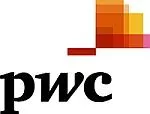In just a few years, cell phone networks have done what fixed line operators have struggled to do for more than a century by connecting up Africa.
I live in Nigeria, where the impact of the mobile revolution is all-pervasive. When the first mobile network was set up in the country in 1994, there were just 100,000 active landlines - one for every thousand people. Thanks to the rapid spread of mobile telephony, more than 100 million Nigerians are now connected, making cell phones as common here as in the US. Looking at other major markets across the continent, 65 percent of the people taking part in a recent Pew Research study said they own a cell phone, though in many markets penetration is higher.
Transformation gathers pace
In a continent in which levels of financial inclusion remain low (only 34 of people have bank accounts and 6 percent have access to formal borrowing), the transformational potential of mobile finance services is already evident in the rapid growth of the M-Pesa and MTN Money networks. Just as mobiles have done what fixed line operators largely failed to do in connecting Africa, cell phones offer the kind of cheap, fast and convenient access to financial services that even the most extensive branch networks struggle to provide. Three out of ten African cell phone owners in the Pew study say they use their phone to make and receive payments.
Yet in many ways, mobile payment is just the beginning. The groundswell of innovation across the continent is embracing everything from insurance and remittances to the hugely underserved agricultural and SME lending markets.
Many leading mobile phone companies now offer a range of health, life, crop and funeral insurance micro-cover. Some offer insurance as an add-on incentive for people taking out a certain amount of credit, helping to improve loyalty and retention in a market in which people often use multiple operators as they seek out the best deal.
The fees for conventional remittances to Africa are some of the highest in the world (12 percent as standard and possibly even higher in some countries). Remit is one of the many start-ups that allow Africans abroad to send money directly to relatives' mobile wallets, charging an advertised 5.4 percent fee. Some of the virtual currency-based transfer services charge as little as 3 percent. According to the World Bank, bringing remittance prices down to 5 percent would put an extra $4 billion a year in the pockets of African migrants and their relatives.
The growth in mobile SME lending is in many ways the most ground-breaking development. Small businesses rarely have the credit history or collateral to gain access to conventional bank borrowing. A number of bank and mobile telephone partnerships offer microcredit, with the sums available steadily increased if clients pay back on time. Examples include a scheme run by AFB Bank in Ghana, which lends up to $100 to informal market traders. Comparable insurance schemes are also emerging. A report by the International Labor Organization has highlighted the significant boost to agricultural productivity opened up by improving farmers' access to credit and insurance.
Out in front
As innovation gathers pace, Africa is leapfrogging the rest of the world in the development of mobile banking and what could eventually be a cashless, or at least cash-lite, economy. In Sub-Saharan Africa, 12 percent of adults have a mobile money account compared to just 2 percent worldwide.
As mobile and broader digital connectivity (smartphone penetration is growing fast) make ever greater inroads into financial services, traditional financial institutions face a tough challenge in sustaining relevance. With large and costly branch networks to maintain, banks have a particular challenge in remaining cost competitive. The overhead cost to total asset ratio among Sub-Saharan African banks is nearly 5 percent, compared to less than 2 percent in East Asia.
If customers know they can send money for a 3 percent fee rather than 12 percent or that mobile transactions cost less than going to a branch, then they will quickly switch. The low cost of mobile financial services also makes it affordable for people who until recently have been effectively bypassed by the financial system. For example, lower income groups want to save, but traditional banks can often charge too much to make small amounts of savings worthwhile. When someone can use their mobile to save a little at a time without most of the interest being swallowed up in fees and can see the interest earned in real-time, then this is an untapped market that is now ready for take-off.
Survival and supremacy
At the innovative-edge of the marketplace, this is a battle for market supremacy. Several dominant groups are likely to emerge, with mobile offering opportunities to reach customers in new markets without the need for branches. These groups are already positioning themselves.
For slower moving competitors, the mounting pressure on costs will usher in a difficult fight for survival. In an already fragmented and overbanked marketplace within many African countries, there will certainly be casualties. Anything up to 80 percent of banks in Sub-Saharan African could be swallowed up in consolidation or disappear altogether by 2025.
So how can financial services organisations remain relevant and prosper in this fast-changing industry landscape?
1. Embrace mobile
A cost-efficient mobile platform is essential. A number of banks are going further by effectively becoming mobile operators. Examples include Equity Bank, which is partnering with Airtel to provide banking services through a dedicated mobile virtual network operator (MVNO) platform. The bank sees Equity MVNO as the "next big thing", allowing it to reduce the cost of delivering mobile services and position it to take full advantage of the opportunities opened up by big data analytics.
2. Embrace the new generation
Africa's population is predominantly young, urban and connected. Simply offering mobile connectivity is not enough in itself. Financial services organisations face the challenge of how to tap into the mind space of networked generations who have little loyalty to traditional brands and look to their virtual peers to provide key product assessment and recommendations. GTB Bank is one of the institutions that is consciously targeting the millennial generation in areas ranging from sports sponsorship to media tie-ins. Its GTCrea8 eSavers Account is designed for undergraduates who are "typically very agile, mobile and technology savvy. They are very time conscious and have their own set of expectations regarding what is acceptable banking service".
3. Know your competitors
Market or even regional pre-eminence is no longer a guarantee of survival in an industry where the main competitor could as easily be a telecoms company as a traditional peer. Where could disruption come from? How can the business keep out in front? This new competitive landscape is explored further in Battle for African Banking Supremacy.
4. Security is critical
One of the great advantages of the cashless model is the security of not having to carry around large amounts of money. But as more business moves over to digital channels, there is clearly a growing risk of cyber fraud and data compromise. The need for identity verification through passports, bills and other paper documents can of course negate the on-the-go accessibility of mobile. Greater deployment of biometric verification is one option. Others include digital accreditation. TYME, a South African start-up which was recently acquired by the Commonwealth Bank of Australia, has developed innovative know your customer (KYC) accreditation solutions that allow customers to open a simple bank account over their mobile phone.
5. Regulators need to keep pace
These innovative new banking models are an opportunity to increase financial inclusion and affordability. However, regulators need to develop the systems and expertise to oversee a digital marketplace. The Central Bank of Nigeria's launch of a centralised biometric identification system for the banking industry is a good example of how supervisors can ensure that controls keep pace with an increasingly digital and cashless economy.
The content of this article is intended to provide a general guide to the subject matter. Specialist advice should be sought about your specific circumstances.

